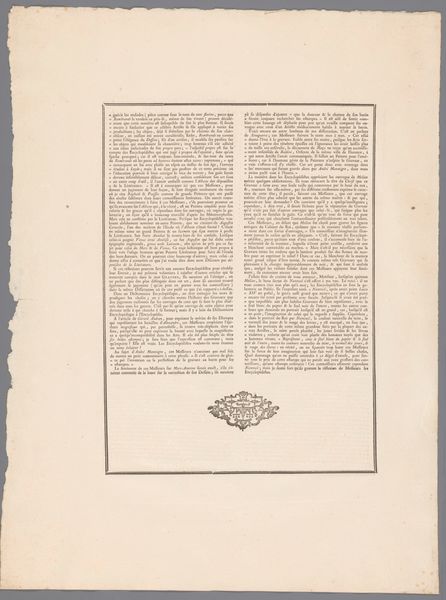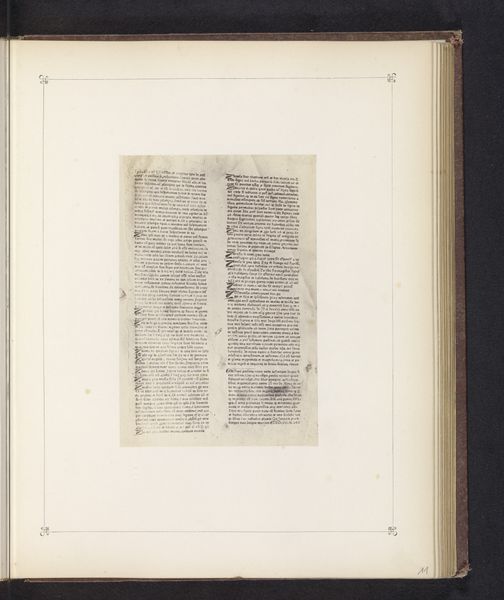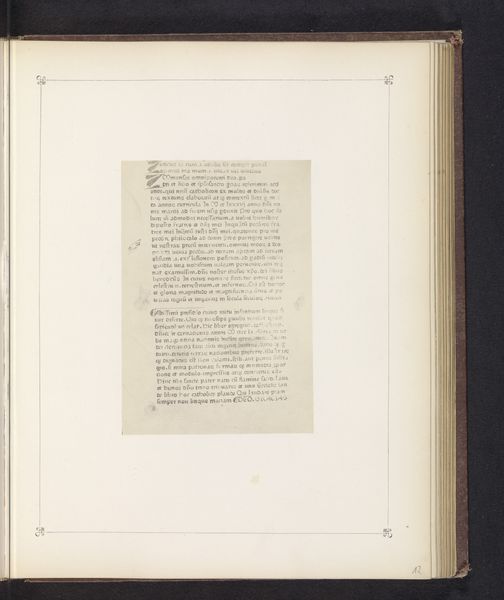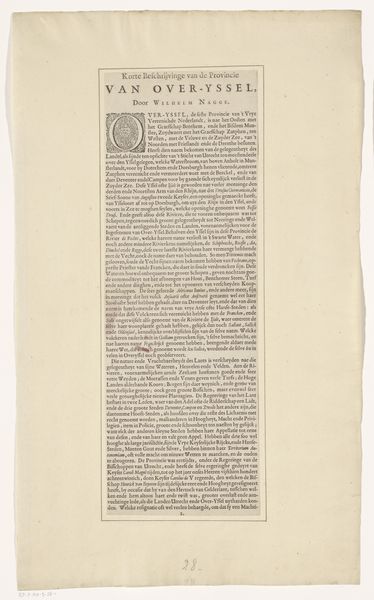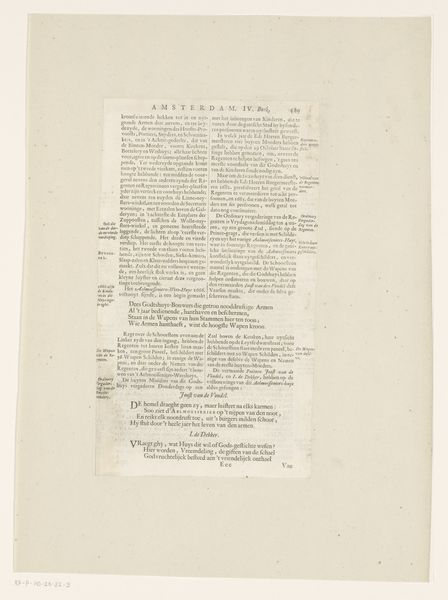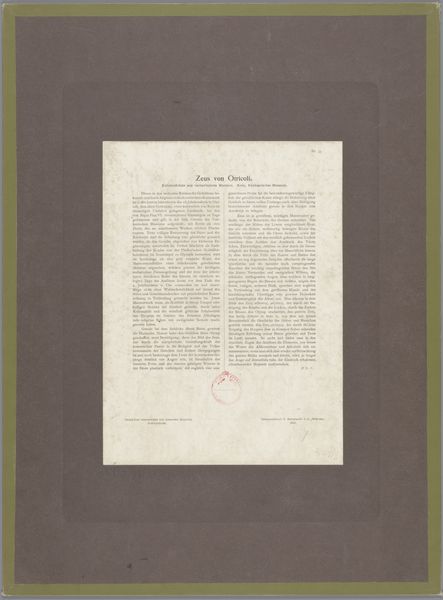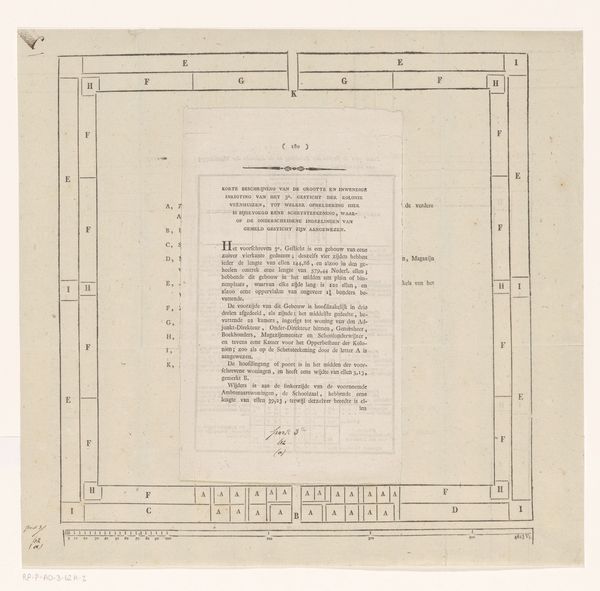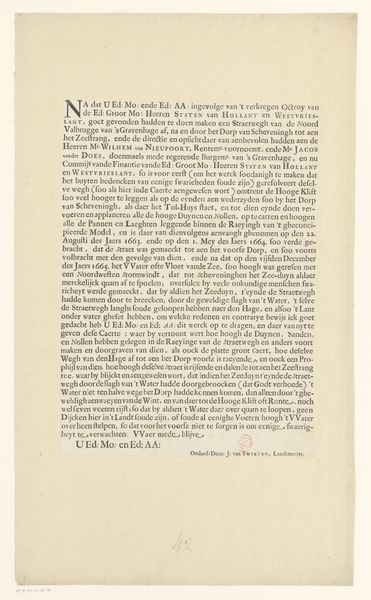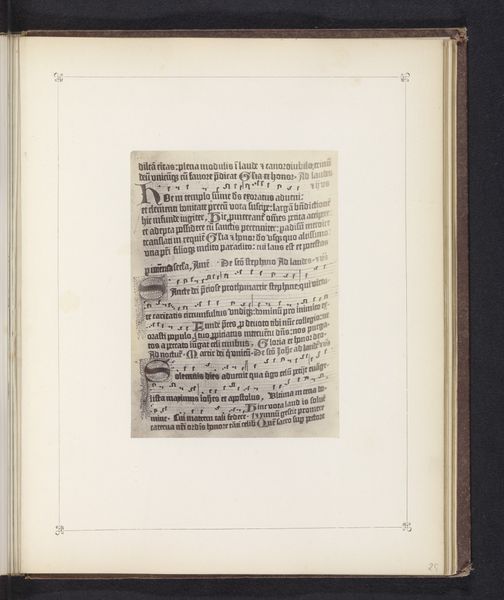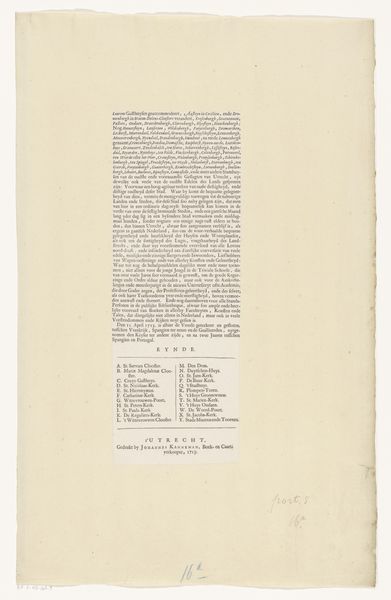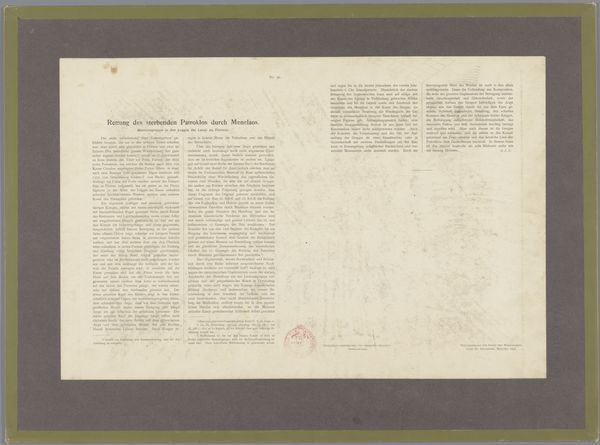
Dankbetuiging van Bakker Korff aan de Archeologische Maatschappij te Athene bij zijn benoeming tot honorair lid, 1839 1839
0:00
0:00
adschinkel
Rijksmuseum
print, engraving
#
neoclacissism
# print
#
old engraving style
#
academic-art
#
engraving
Dimensions: height 568 mm, width 430 mm
Copyright: Rijks Museum: Open Domain
This is A.D. Schinkel’s "Dankbetuiging van Bakker Korff aan de Archeologische Maatschappij te Athene bij zijn benoeming tot honorair lid," made in 1839. Note the neoclassical style, defined by austere geometric forms and emblems of classical antiquity. Embedded in the frame are stylized anthemions, palmettes, and key patterns. These motifs, sourced from ancient Greek architecture and pottery, enjoyed a resurgence during the Neoclassical period, signaling a return to the perceived purity and rationality of classical civilization. The cameo portraits emulate the imagery of ancient coins and medals, evoking ideas of permanence, honor, and historical legacy. These symbols are not fixed; they reappear and evolve. Consider the anthemion, seen in ancient Greek temples. It's a form re-emerging in funerary art, evolving into a symbol of hope and resurrection. Such non-linear transmission echoes our collective memory. These forms resonate deeply, tapping into ancestral, psychological layers. The emotional power lies in their ability to evoke a sense of continuity and shared human experience. The cyclical progression of these motifs highlights how cultural memory resurfaces, evolves, and acquires new meanings in different historical contexts.
Comments
No comments
Be the first to comment and join the conversation on the ultimate creative platform.
